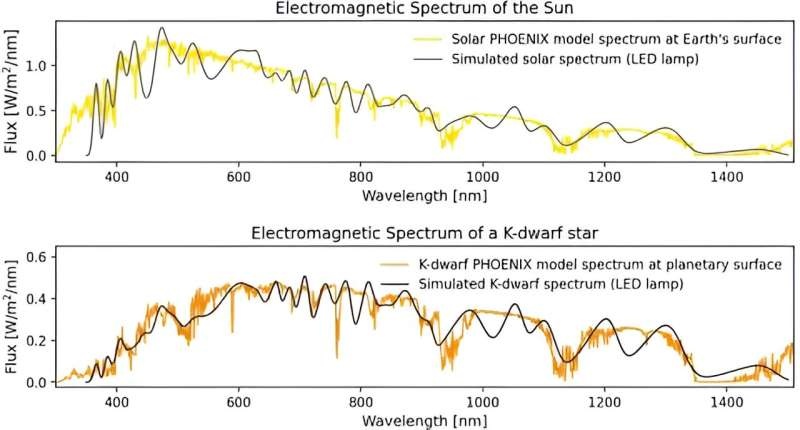Find out how plants like garden cress and cyanobacteria might adjust to growing in K-dwarf light, which hint at new targets for the search of habitable exoplanets.

The Goldilocks Stars
For decades, scientists have leaned heavily on the search for Earth-like planets around stars much like our own sun — likely candidates where there’s a possibility life could exist. But in their quest to find those elusive planets and other solar systems, a new study finds that K-dwarf stars may be more fruitful hunting ground.
Their M-dwarf counterparts, however, are subject to intense flaring which would pose a sterilizing environment for nearby planets whereas K-dwarfs are more stable. Their luminosities remain fairly constant for 70 billion years, which could make life on their exoplanets much easier because the stars would not have major brightness fluctuations.
The researchers behind the new study used a ground-based simulation to replicate light from a K-dwarf star and then examined how two photosynthetic organisms — garden cress and an extremophile cyanobacterium called Chroococcidiopsis — would react to these alien rays. If the findings are correct, it would mean that these organisms may be not only capable of surviving in completely dark conditions but could potentially even gain more power from it than they would from our sun’s light, providing scientists with another possibility for habitable exoplanets.
If Photosynthesis Were to Occur on Another World
By influencing everything from the Great Oxygenation Event that set the stage for Earth’s iron life, to shaping the ozone later protecting living creatures taking their first steps on land, photosynthesis has been one of life’s key players. Insight into how photosynthetic biological systems could cope in other stellar environments is crucial in defining the limits of habitability for exoplanets.
We have seen studies around the potential for photosynthesis on planets orbiting the faint light of M-dwarf stars (other Suns), but so far this is the first time someone has taken a look at what K-dwarf illumination might imply. While they noted at the time that additional experimentation is obviously needed, the results indicate both garden cress and the robust cyanobacterium could hold their own under irradiation from these smaller, less massive stars.
These included taller garden cress seedlings with a slightly higher water content under the simulated K-dwarf light, and increased growth rate of the cyanobacterium, compared to their performance in standard sunlight simulations. This suggests that these photosynthetic organisms have the flexibility to use the specific spectral features of K stars, which may allow for more distant habitable zones around these stars and open up at least some new regions in the search for life outside our Solar System.
Conclusion
This study breaks new ground, demonstrating photosynthesizing life forms might be able to survive underneath the light of K-dwarf stars. These results may have important consequences for where life could exist in the universe, expanding our horizons with respect to astrobiology and the search for other forms of life.
